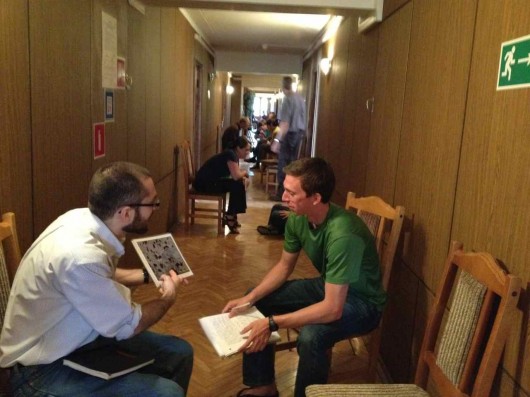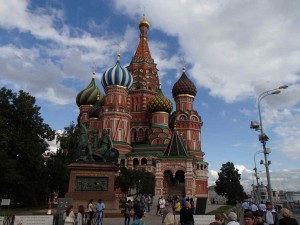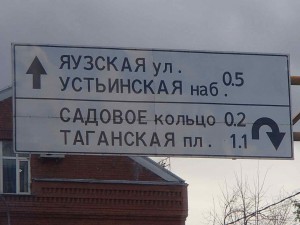(This journal comes from Mark Paricio, a PolarTREC teacher accompanying the Polaris Project this year. To see all of Mark’s journals got to: http://www.polartrec.com/expeditions/siberian-arctic-systems-study )
The students and researchers of the Polaris Project made our way from New York to Moscow yesterday. Today, we leave Moscow and fly six time zones overnight to reach Yakutsk. It is an exciting experience to meet enthusiastic scientists and embark on an adventure together.
A Couple Hours of Sight Seeing
We did have the opportunity to visit Red Square last evening. In reading before my trip, I learned that the “Red” in the name actually comes from the Russian word for “beautiful” and originated in the 15th century – and had nothing to do with Communism. It was a beautiful evening to see the sights, including St. Basil’s cathedral and the Kremlin.
One of the things I liked the most about visiting Moscow was an introduction to the Russian language. I feel lucky to be traveling with experienced scientists, some of whom do speak Russian. Without her, I am sure I wouldn’t get far deciphering the language or streets. I love to hear Russian spoken!
Speed-Dating-Science?
What is Speed-Dating-Science? The scene at our hotel hallway resembled speed dating, except with researchers (known as PIs – Principle Investigators) sitting across from the undergraduate students of the Polaris Project, shifting every five minutes.

PhD student Dave Mayer from Clark University exchanges ideas with undergraduate student Eric Taber from Colgate University.
One of the primary goals of the Polaris Project is to introduce science students to the research taking place in the Arctic and to give them an opportunity to design their own research projects in Siberia. The amazing part of the mixture of people involved in the Polaris Project is that we have expert PIs in every aspect of polar research with us – from soils, forests, rivers, lakes, and atmosphere – all investigating some aspect of how carbon cycles through the environment and how carbon is released from the permafrost into the atmosphere as well through many pathways. So as students design their research projects, they get to bounce their ideas off of some phenomenal experts, who help bring new perspectives and focus to their design. The exchange of ideas between all of these people was truly fun to watch! I learned a tremendous amount from each of the PIs and students about the research taking place in Cherskiy.
Over the next month, I will try to follow and outline the research of each group and introduce you to some amazing people and their work in Cherskiy.
Off Again Tonight
I am writing this from the Moscow Airport. Now, it’s off to Yakutsk on another red-eye flight and then to Cherskiy!
Stay curious my friends! – Mark Paricio





